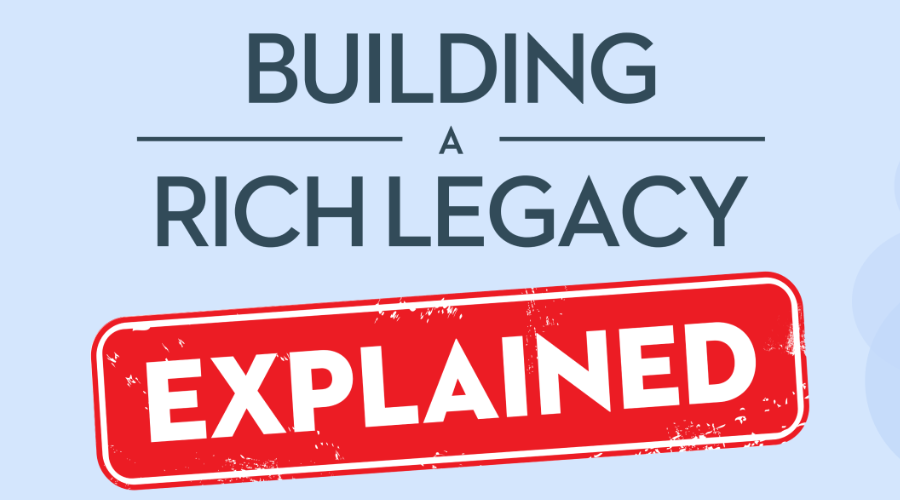If you work for a company that offers a Defined Contribution Pension Plan (DCPP), you have another tool to reach your retirement goals.
DCPP meaning
A DCPP is an employer-sponsored registered pension plan designed to help you save for retirement. Contributions come from both you and your employer. Your contributions are tax deductible, subject to government limits, and the assets in your plan grow tax-free.
In this article, you’ll learn how a DCPP works and explore the differences compared to other retirement plans, such as a Registered Retirement Savings Plan (RRSP). The article also discusses ways to maximize your retirement income.
How does a DCPP Defined Contribution Pension Plan work in Canada?
With a DCPP, you and your employer both contribute a percentage of your salary to the plan during your tenure with the company. When you retire, you can convert that money into a retirement income stream. The amount you receive at retirement depends on how much has been contributed and how well the investments in your plan have performed.
Maximum contribution limit for DCPP
- Employees can contribute between 0.5% to 3% of their eligible earnings annually. There is also an optional voluntary employee contribution component.
- Employers must contribute at least 1% of an employee’s salary and can contribute up to 18% of their salary.
- The maximum combined contribution for both employee and employer is the lesser of 18% of earned income to a maximum of $32,490 for 2024.
DCPP withdrawal rules
You can’t withdraw the money in a DCPP before you retire. The earliest retirement age depends on the plan and is typically 10 years before the normal retirement age. So, if the normal retirement age is 65, the earliest you can retire and withdraw money from the plan is age 55.
DCPP vs RRSP
The major difference between a DCPP and an RRSP has to do with withdrawals. DCPP withdrawal rules are based on provincial pension legislation, which “locks in” the funds in your DCPP until you retire. That means you cannot make withdrawals from the plan until you reach a minimum age – which is typically 10 years before the normal retirement age of 65, or age 55.
In contrast, you can withdraw funds from your RRSP at any time – although you will be subject to a withholding tax. Here are some of the other differences between the two plans.
A DCPP is subject to applicable provincial pension legislation, while an RRSP is not.
There’s a maximum annual withdrawal limit for funds held in a DCPP, or a locked-in plan that originated from a DCPP plan, but there’s no maximum annual withdrawal limit for an RRSP.
Another difference has to do with DCPP vs RRSP contribution limits. Contribution limits to a DCPP for both employer and employee are based on the employee’s salary, and the total contribution limits ($32,490 for 2024) are a combination of the two. For RRSPs, contribution limits are solely related to the employee’s income or a set maximum (for 2024, 18% of earned income in the previous year, to a maximum of $31,560).
DCPP to RRSP
There are a few situations where you can transfer funds from a DCPP to an RRSP. One is where you made “voluntary contributions” to a DCPP – that is, contributions over and above the proscribed minimum employee contribution. The other is when the amount in your DCPP qualifies as a “small amount” under the relevant provincial pension legislation.
DCPP vs DPSP
A Deferred Profit-Sharing Plan (DPSP) is a kind of DCPP where an employer distributes a portion of pre-tax profits to select employees. The main difference between the two is that employees do not contribute to a DPSP – the employer alone contributes to the plan, and those contributions are based on company profits. Another key difference is that a DPSP can be transferred to an RRSP, but a DCPP cannot. Also, unlike a DCPP, a Deferred Profit-Sharing Plan gives employees a direct interest in the company’s performance and profitability.
DCPP Benefits
The main benefit of a DCPP is that your contributions are tax-deductible and the funds in your plan grow on a tax-deferred basis until you’re ready to retire. Other benefits include:
- Your employer contributes to your plan and may match your own contributions.
- You have control of your investment decisions
- At retirement, you can turn your DCPP assets into a retirement income stream by purchasing an annuity or a Locked-in Retirement Account (LIRA).
Disadvantages of DCPP
The main disadvantage of a DCPP – especially compared to a Defined Benefit Pension Plan – is that the amount of money you receive in retirement is uncertain, as it is dependent on how well your investments perform. Other disadvantages include:
- Depending on your plan provider, you may have limited investment options to choose from and any mutual funds may come with higher management fees.
- You bear all the investment risk in your plan.
- The onus is on you to make all investment decisions and plan for your retirement income

Maximize your retirement income
Despite our best intentions, a DCPP alone may not provide the retirement savings we need to live our best life in retirement – especially in today’s climate of stubbornly high inflation. That’s why many Canadian homeowners aged 55+ are looking to the equity in their homes to boost their retirement cash flow and alleviate financial stress.
With a CHIP Reverse Mortgage, you can access up to 55% of the equity in your home in tax-free cash. The funds can be used to meet a variety of different needs, such as taking care of day-to-day expenses, taking a much-needed vacation or helping your children with a down payment on their first home. And since the money you receive from a reverse mortgage is a loan, it’s not added to your taxable income and does not affect benefits such as the OAS.
Learn more about how a CHIP Reverse Mortgage works and how it can help with your cash flow needs in retirement or call us toll-free at 1-866-522-2447.
Frequently Asked Questions about DCPP Defined Contribution Pension Plans
What happens to DCPP when I quit?
You can keep the defined contribution pension plan with your plan provider (typically an insurance or investment company). You may also be able to transfer your pension to another employer pension plan, depending on your province’s pension legislation, or transfer it into a Locked-in Retirement Account (LIRA).
What are the DCPP withdrawal rules?
You cannot withdraw funds from the plan until you reach a minimum age, usually 10 years before the normal retirement age of 65, or age 55.
Are my DCPP contributions tax-deductible?
Your DCPP contributions are tax-deductible, subject to government limits.
Are DCPPs the same as RRSPs?
Although both plans are designed to help you save for retirement in a tax-deferred manner, they are not the same. The major difference is that you cannot withdraw funds from your DCPP until you retire, while you can withdraw funds from your RRSP at any time.
Can a DCPP be transferred to an RRSP?
Generally, no, but you can transfer any “voluntary” contributions or “small” amounts, depending on your provincial legislation.
Does DCPP count towards RRSP?
Yes, DCPP contributions (both yours and your employer’s) lower your RRSP limit for the next year.
Can I use my DCPP to purchase a home?
No, you cannot withdraw funds to purchase a home, like you can with a Home Buyers‘ Plan through your RRSP.































